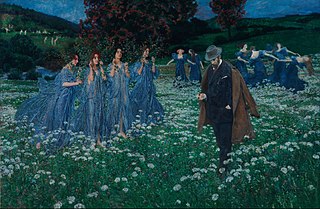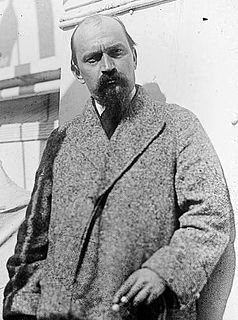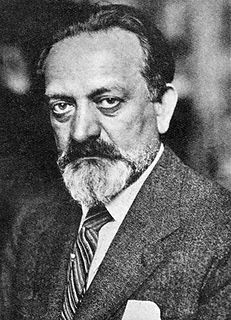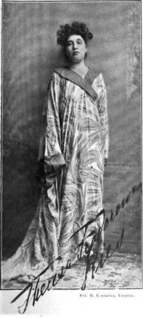 W
WJosef Maria Auchentaller was an Austrian painter, draftsman, and printmaker associated with the Vienna Secession and the Art Nouveau style.
 W
WTeodor Axentowicz was a Polish-Armenian painter and university professor. A renowned artist of his times, he was also the rector of the Academy of Fine Arts in Kraków. As an artist, Axentowicz was famous for his portraits and subtle scenes of Hutsul life, set in the Carpathians.
 W
WHugo Baar was a Moravian-German landscape painter.
 W
WWilhelm Bernatzik was an Austrian painter.
 W
WAdolf Michael Boehm was an Austrian painter and graphic artist.
 W
WStanisław Mieczysław Dębicki, was a Polish painter and illustrator.
 W
WAlois Delug was an Austrian painter and a professor at the Academy of Fine Arts, Vienna. He may be remembered best for his supposed role in rejecting Adolf Hitler's application to join the Academy.
 W
WGustav Gurschner (1873–1970) was an Austrian sculptor active in the decorative arts.
 W
WEdmund Ritter von Hellmer, born Edmund Hellmer and ennobled in 1912, was an Austrian sculptor who worked in the styles of Historicism and Art Nouveau.
 W
WVojtěch Adalbert Hynais was a Czech painter, designer and graphics artist. He designed the curtain of the Prague National Theatre, decorated a number of buildings in Prague and Vienna, and was a founding member of the Vienna Secession. He was made an Officer of the Légion d'honneur in 1924.
 W
WRichard Alfred Eugen Jettel was an Austrian painter, producing mainly landscapes. He studied at the Vienna Academy and moved to Paris in 1873, before moving back to Vienna in 1897 and serving as a co-founder of the Vienna Secession. He was made a Knight of the Légion d'honneur in 1898.
 W
WGustav Klimt was an Austrian symbolist painter and one of the most prominent members of the Vienna Secession movement. Klimt is noted for his paintings, murals, sketches, and other objets d'art. Klimt's primary subject was the female body, and his works are marked by a frank eroticism. Amongst his figurative works, which include allegories and portraits, he painted landscapes. Among the artists of the Vienna Secession, Klimt was the most influenced by Japanese art and its methods.
 W
WHeinrich Knirr was an Austrian-born German painter, known for genre scenes and portraits, although he also did landscapes and still-lifes. He is best-known for creating the official portrait of Adolf Hitler for 1937 and is the only artist known to have painted Hitler from life.
 W
WFriedrich König was an Austrian painter, illustrator and designer.
 W
WJohann Victor Krämer was an Austrian painter and photographer, working generally within the Orientalist genre. He was a founding member of the Vienna Secession, and received many awards through his life.
 W
WMaximilian Franz Viktor Zdenko Marie Kurzweil was an Austrian painter and printmaker. He moved near Vienna in 1879.
 W
WMaximilian Lenz was an Austrian painter, graphic artist and sculptor. Lenz was a founding member of the Vienna Secession; during his career's most important period, he was a Symbolist, but later his work became increasingly naturalistic. He worked in a variety of media, including oils, watercolours, lithography and metal reliefs.
 W
WMaximilian Albert Josef Liebenwein was an Austrian-German painter, graphic artist and book illustrator, in the Impressionist and Art Nouveau styles. He spent significant time in Vienna, Munich and Burghausen, Altötting, and took an active part in the artistic community in all three places. He was an important member of the Vienna Secession, becoming its vice-president, and exhibiting with the group many times.
 W
WIvan Meštrović was a Croatian sculptor, architect, and writer. He was the most prominent modern Croatian sculptor and a leading artistic personality in contemporary Zagreb. He studied at Pavle Bilinić's Stone Workshop in Split and at the Academy of Fine Arts Vienna, where he was formed under the influence of the Secession. He traveled throughout Europe and studied the works of ancient and Renaissance masters, especially Michelangelo, and French sculptors Auguste Rodin, Antoine Bourdelle and Aristide Maillol. He was the initiator of the national-romantic group Medulić. During the First World War, he lived in emigration. After the war, he returned to Croatia and began a long and fruitful period of sculpture and pedagogical work. In 1942 he emigrated to Italy, in 1943 to Switzerland and in 1947 to the United States. He was a professor of sculpture at the Syracuse University and from 1955 at the University of Notre Dame in South Bend, Indiana.
 W
WCarl Julius Rudolf Moll was a prominent art nouveau painter active in Vienna at the start of the 20th century. He was one of the artists of the Vienna Secession who took inspiration from the pointillist techniques of French Impressionists.
 W
WKoloman Moser was an Austrian artist who exerted considerable influence on twentieth-century graphic art. He was one of the foremost artists of the Vienna Secession movement and a co-founder of Wiener Werkstätte.
 W
WAlfons Maria Mucha, known internationally as Alphonse Mucha, was a Czech painter, illustrator, and graphic artist, living in Paris during the Art Nouveau period, best known for his distinctly stylized and decorative theatrical posters, particularly those of Sarah Bernhardt. He produced illustrations, advertisements, decorative panels, and designs, which became among the best-known images of the period.
 W
WFelician Myrbach was an Austrian painter, graphic designer and illustrator. He was a founding member of the Vienna Secession and the director of the Applied Arts School in Vienna, and was instrumental in the creation of the Wiener Werkstätte.
 W
WAnton Nowak was an Austrian artist and graphic designer.
 W
WEmil Orlik was a painter, etcher and lithographer. He was born in Prague, which was at that time part of the Austro-Hungarian Empire, and lived and worked in Prague, Austria and Germany.
 W
WRudolf Otto von Ottenfeld was an Austrian military painter, a founding member of the Vienna Secession and a professor at the Academy of Fine Arts, Prague.
 W
WMaximilian Pirner was a Czech painter. He was a member of the Vienna Secession, and associated with the Mánes Union of Fine Arts.
 W
WRobert Pötzelberger was an Austrian painter, sculptor and lithographer.
 W
WTeresa Feoderovna Ries (1874–1956) was a Russian-born Austrian sculptor and painter.
 W
WAlfred Roller was an Austrian painter, graphic designer, and set designer. His wife was Mileva Roller and they were members of the Viennese Secession movement.
Ernst Stöhr (1860–1917) was an Austrian painter, graphic artist, writer and amateur musician; one of the founding members of the Vienna Secession.
 W
WCarl Thiemann was a Bohemian artist and member of the Vienna Secession, best known for his color woodcuts.
 W
WHans Tichy was an Austrian artist and a professor at the Academy of Fine Arts, Vienna.
 W
WJoseph Urbania was a 20th Century Slovene Sculptor, who lived and worked in Austria for much of his life. His media was large-scale wood, stone, bronze and plaster religious sculptures for European cathedrals.
 W
WFranz von Stuck was a German painter, sculptor, printmaker, and architect. Stuck was best known for his paintings of ancient mythology, receiving substantial critical acclaim with The Sin in 1892. In 1906, Stuck was awarded the Order of Merit of the Bavarian Crown and was henceforth known as Franz Ritter von Stuck.